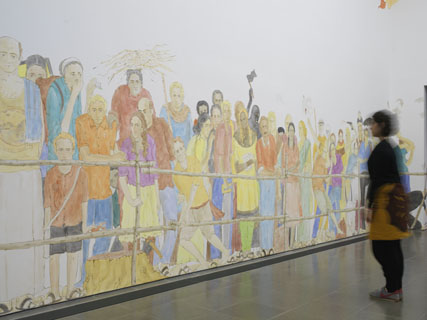The Serpentine Gallery’s new exhibition goes by the presumably ironic title of “Indian Highway”. The phrase implies a straight-line journey when in truth this is a show that travels the length and breadth of the Indian subcontinent’s cultural landscape. Jointly curated by Julia Peyton Jones, Hans Ulrich Obrist and Gunnar B. Kvaran of the Astrup Fearnley Museum of Modern Art in Oslo, it explores highways and byways, city and country, overground and underground alike.
“Indian Highway” is Britain’s first serious exhibition devoted to the full range of contemporary Indian art. The Serpentine might be one of London’s smaller modern art galleries, but under the confident stewardship of Peyton Jones, it has become enormously ambitious. Too ambitious on this occasion, it might be thought, since the list of exhibited artists is so long that it is hard to imagine how they might all be accommodated within the elegant but restricted gallery spaces at her disposal. Yet somehow the feat has been managed.
The show has been allowed to spill over into every last nook and cranny of the Serpentine’s parkland pavilion, occupying lobby and foyer and education room and spreading outside as well. Part of Kensington Gardens themselves were colonised, for the show’s opening few days, by an engaging performance artist named Nikhil Chopra, whose various activities included pitching a tent in the park and dressing up as a frock-coated Indian postmaster from the days of the Raj – complete with waxed handlebar moustache – to unwrap a number of twine-and-burlap-wrapped packages addressed to himself. A wry reflection on the very nature of travelling art exhibitions, even perhaps “Indian Highway” itself, was to be inferred. Like Chopra’s little bundles, each work of art in the exhibition is indeed a package sent from a distance, loaded with implications about national identity, past and...


